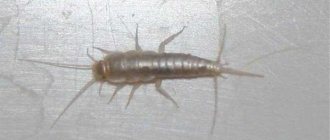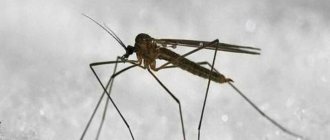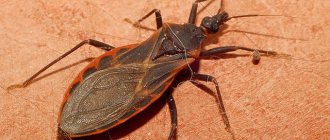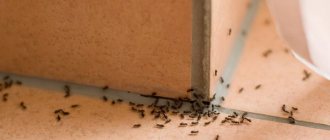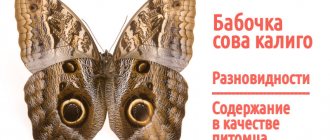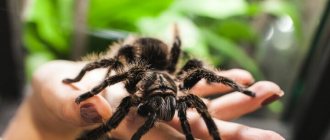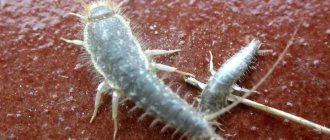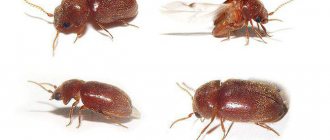The smallest insect in the world: Pixabay More than a million different insects live on our planet, but we can’t see all of them. Some of them live in inaccessible places, while others are so small that they are only visible under a microscope. Among the small record-breaking insects, parasitic riders of the family Mymaridae predominate.
What are the smallest insects in the world? Entomologists continue to work on finding new species of insects, so the list of record holders changes from time to time. The top smallest insects include Mymaridae Haliday, Megaphragma mymaripenne, Dicopomorpha echmepterygis, Alaptus magnanimus Annandale.
Mymaridae Haliday (0.2–4 mm)
The smallest insect in the world: Wikipedia
Mimarids are parasitic insects of the order Hymenoptera. The ichneumon ichneumon family Mymaridae Haliday consists of 1,400 species. Most of them parasitize on beetles and bedbugs, some on aquatic insects. In the water they use their wings as oars. They can spend up to 15 days underwater.
What role does mimarida play in nature? It is necessary for pest control. This small winged rider destroys the weevil, which is considered a serious threat to eucalyptus. So, they save trees in New Zealand, Africa, Southern Europe.
The rarest insect: the Lord Howe Island piercing insect
This rather large insect of the piercing family lives on Lord Howe Island between Australia and New Zealand. The species is also an example of what biologists call the Lazarus effect, which is when a species is thought to be extinct and then found again. The number of Dryococelus australis today is no more than 50 individuals; at the time of rediscovery there were only 24.
The insect is endangered, however, there is hope for the restoration of the species. The Melbourne Zoo in Australia is trying to breed 9 thousand individuals under a special program.
Gonatocerus (2.6 mm)
The smallest insect in the world: Wikipedia
Gonatocerus are insects from the genus Chalcididae, which also belong to the Mimaridae family. Parasites whose body length can be 0.6–2.6 mm. They parasitize clutches of leafhoppers and humpbacks.
Individuals have two pairs of wings, the back pair is smaller than the front. They also have antennae that can be used to determine their gender. Females have 12-segmented antennae, while males have 13-segmented antennae. The genus Gonatocerus includes about 50 species that live in different parts of the world - from Australia to South America.
The most terrifying insect: locusta migratoria
The Locusta migratoria or migrating locust is perhaps the most terrifying insect known to man. Although mosquitoes are to blame for many human deaths, it is locusts that have always made people scream in horror. Locust swarms are rare these days, but do occur in some parts of the world: this was the case in Madagascar last year, or, for example, the locust attack in 2004, which affected several countries in West and North Africa and led to losses of 2.5 billion dollars.
Micronecta scholtzi (2mm)
The smallest insect in the world: Wikipedia
Micronecta scholtzi - water bugs of the rower family, order Hemiptera. They live in bodies of standing water, usually lakes and ponds. Distributed in Europe. The body length of insects reaches 2 mm, but they are known not only for this.
A distinctive feature of the bug is that it is the loudest of the small insects. The sound volume reaches 99.2 dB, like a moving train. They make such a loud chirping sound to attract a female. Since bedbugs live in water, the human ear hears a sound muffled by water.
The most tenacious insect: the German cockroach
I think few will be surprised by the title of this point. In the sense that everyone has heard something like: after a nuclear war, only cockroaches will survive. And yet there is a rather curious case: the larva of a German cockroach (Blattaria germanica) managed to survive in a very unfavorable environment for it - in the colon of a 52-year-old woman. Apparently she got there with the food and somehow managed not to be harmed by the stomach's digestive enzymes.
Nanosella fungi (0.39 mm)
The smallest insect in the world: Wikipedia
In the system of insects presented in the work of the Czech scientist Vaclav Stanek, Nanosella fungi occupies a place in the order of Coleoptera insects. Until 2015, this particular insect was considered the smallest of the Coleoptera, but entomologists refuted this information. Scydosella musawasensis was recognized as the smallest coleopteran.
Nanosella fungi live in the eastern regions of the United States. They are usually found in the spores of tinder fungi living on wood.
Peacock-eye Atlas
In 3rd place is the Atlas peacock butterfly, which is the largest representative of the insect world. Its wingspan is 26 cm, which causes real admiration among people.
This giant lives in eastern countries - China, India, Pakistan, etc. The largest specimen was discovered on the island of Java, its length was 26.2 cm. It was a female, since females of this species are much larger than males.
The Atlas Peacock-eye is most active in the evening, when dusk sets in. In poor lighting, it is often mistaken for a silent bird.
Its lifespan is very short: immediately after reproduction, the butterfly dies. She does not even have a mouth, since in adulthood she does not eat, but lives off the reserves that accumulated during the larval stage.
People appreciated not only the size of the peacock eye: its huge cocoons in Taiwan are used as wallets, and tourists willingly buy such souvenirs. In addition, fagar silk is produced from cocoons on a commercial scale, which is superior to silkworm thread in strength and durability.
Scydosella musawasensis (0.337 mm)
The smallest insect in the world: Wikipedia
The only representative of the genus Scydosella. Recognized as the smallest Coleopteran and the smallest free-living insect. Lives in Central and South America. It was first discovered in Nicaragua and named after its location. The body length is 0.325–0.352 mm. Lives inside tinder fungi.
Orchid mantis
The 4th position is occupied by the orchid mantis for its exotic appearance.
This rare and amazing insect lives in Malaysia and Thailand, where many orchids bloom in the wild. The praying mantis is very similar in color and shape to the petals of these plants, which helps it hunt orchid pollinators. He sits down not far from fragrant flowers, and pollinators mistakenly land on him, after which they fall into his tenacious paws.
The color of the orchid mantis is not constant: the main color is white, but depending on the shade of the flower next to which the insect is located, the color of its body or legs may also change. At a young age, such variability is very pronounced, but with age, the ability to change gradually weakens.
Due to its amazing appearance and unpretentiousness to living conditions, the orchid mantis is often kept at home and enjoyed the beauty of this representative of the exotic tropical fauna.
Tinkerbella nana (0.25 mm)
The smallest insect in the world: Wikipedia
Another representative of parasitic riders of the Mimaridae family. It lives in Central America, body length is up to 0.25 mm. They are distinguished by complex (faceted) eyes, characteristic of dragonflies, flies, and spiders. This insect was first described in 2013 in the work of Canadian entomologist John Huber.
The name of this rider is associated with the story of Peter Pan. Tinkerbella is the little fairy Tinkerbell, and Nana is the name of Peter Pan's dog, which means 'gnome' in Greek.
Pyrophores
In the 9th position are a special type of fireflies - pyrophores.
Many fireflies have the ability to emit a mysterious light that attracts people. Their luminescent organ is located at the very tip of the abdomen and contains many photogenic cells. The glow occurs due to the oxidation reaction of a fatty substance - luciferin.
Fireflies of the genus Pyrophora have achieved impeccable mastery in controlling the brightness and duration of glow. These inhabitants of tropical forests can turn on 2 different colors on their body at once: the “flashlight” on the abdomen glows bright orange, and on the chest – green.
The brightness of the glow produced by pyrophores is a record among representatives of this class - this beetle can shine 150 times brighter than an ordinary firefly. Local inhabitants use pyrophores to light their way at night by placing several beetles on their hats.
Megaphragma mymaripenne (0.2 mm)
The smallest insect in the world: Wikipedia
Chalcidoid ichneumon, living only 5 days. This is a flying insect that is smaller in size than the slipper ciliate. Distributed in Europe, Australia, South America. It was first discovered in the Hawaiian Islands and described in 1924.
Its distinctive feature is a reduced nervous system, in which there are much fewer neurons than in other insects.
Goliath beetle
The title of the heaviest representative of the class rightfully goes to the Goliath beetle. It received its specific name precisely because of its impressive weight.
The male of this species occupies the entire palm of an adult and weighs about 100 g. It is quite difficult to hold it in your hand, since in addition to its great weight, it has impressive power, which it demonstrates to anyone who tries to catch or hold it.
Goliath larvae are even larger: they exceed even their parents in size and weight. With a length of 15 cm, they weigh 110-120 g. The appetite of such larvae is amazing: while gaining weight, they can eat not only leaves, but also their fellows.
These amazing creatures are protected because they were coveted and prized specimens in many entomological collections and were destroyed uncontrollably for 200 years.
The Goliath beetle ranks 8th as the heaviest beetle in the insect class.
Megaphragma caribea (0.171 mm)
The smallest insect in the world: Wikipedia
The three smallest insects include Megaphragma caribea. This is another chalcidid ichneumon, called caribea after its habitat - in the Caribbean Sea.
Discovered and described in 1993. Until 1997, this insect was considered the smallest on the planet. Its dimensions are 0.1–0.1778 mm, which is 170 microns.
Dragonfly
Position No. 2 is rightfully occupied by representatives of the insect world, which during movement develop the speed at which we most often drive cars. Dragonflies of the southern giant yoke species are capable of flying at a speed of 54 km/h while pursuing prey. Thus, in just a couple of hours they can cover hundreds of kilometers.
During flight, a dragonfly flaps its wings up to 150 times per second, so the human eye cannot distinguish its wings at such a speed. At the same time, they perform masterful techniques: they accelerate sharply, freeze in one place, and can fly backwards and forwards.
Scientists still do not fully understand all the principles of the skillful flight of dragonflies, their flights of tens and hundreds of kilometers, as well as endurance and mechanisms for replenishing energy expended during exercise. Bionics specialists have already borrowed a device from the dragonfly that helps ensure flight with a jet engine, and it is possible that it will suggest many more innovations that can be implemented in helicopter construction.
Dicopomorpha echmepterygis (0.139 mm)
The smallest insect in the world: Wikipedia
In 1997, the species Dicopomorpha echmepterygis, parasitic riders of the Mimaridae family, was discovered. These insects overshadowed Megaphragma caribea and became the smallest on Earth. Their body length is up to 0.139 mm, and the antennae are equal to the length of the body.
They live in Central America. They parasitize on the eggs of insect beetles. Females of Dicopomorpha echmepterygis are almost half larger than males. They have wings and vision, while males are blind and wingless.
Termites
These animals never live alone. They create complex colonies with a clear distribution of functions. This feature is due to the fact that termites have lost the ability to take care of themselves and are therefore completely dependent on the community, like the cells of one living organism.
All actions of individual specimens are so clearly controlled that the illusion of the existence of a single “superorganism” is created, the power of which exceeds the power of many large animals. People often associate termites with ants, but their closest relatives are cockroaches.
Termites make it into the top 10 amazing insects and animals thanks to the queen of the colony - a reproductive female who, after only leaving the termite mound for mating, loses her wings and eyesight. Her abdomen begins to grow and lay eggs. Their number can reach 30,000 daily!
All members of the termite mound are born from such clutches. Termites touchingly care for their mother: they bring her food, clean her body and transfer eggs to special incubators. And the queen herself is unable to move, because while she lies in the nest, her large body continues to grow, turning her into a helpless prisoner of a labyrinth of narrow passages leading to the outside world.
For such cohesion, termites are ranked 10th in the ranking of the most amazing insects in the world.
Alaptus magnanimus Annandale0.12 mm
The smallest insect in the world: Wikipedia
What is the smallest insect in the world? This is Alaptus magnanimus Annandale, a member of the Mymaridae family. The body length of this parasite is 0.12 mm, so humans cannot see it with the naked eye. An individual can only be examined under a microscope.
Where does the smallest insect in the world live? Alaptus magnanimus Annandale was discovered in 1909 in India, where it lives today.
The smallest insects can be examined under a microscope. All of them parasitize living organisms, thereby fulfilling their role in the life of the ecosystem - controlling the population of other insects.
Original article: https://www.nur.kz/leisure/interesting-facts/1931788-samoe-malenkoe-nasekomoe-v-mire-top-10/
The most poisonous insect: the Maricopa ant
Maricopa ants (Pogonomyrmex Maricopa) are the most poisonous insects in the world, but this is in no way a threat to humans. The venom of this ant is 25 times stronger than the venom of the honey bee, but so little of it is released that Maricopa ants are completely harmless. When you read the title, you probably thought of some kind of giant Japanese hornet or African killer bee. Everything turned out to be much simpler; the most poisonous insect lives in almost every backyard in America.
Parasites in beds and clothes and methods for their destruction
Perhaps the most unpleasant and dangerous parasites for humans are blood-sucking insects: bedbugs and body lice. They feed on human blood and cannot exist away from people. It is very difficult to destroy such insects; they often become carriers of diseases such as hepatitis B, pulicosis, salmonellosis, and tularemia. The constant presence of biting insects, lice or bedbugs in the bed can cause nervous breakdown and sleep disturbances.
Bed bugs
These are domestic blood-sucking insects that cannot exist without humans. Bedbugs bite more often at night because they are afraid of bright light. If in the morning black spots and traces of blood are visible on the laundry, this indicates the presence of bedbugs in the house. It is not difficult to detect them; just lift the mattress on the bed or carefully examine the folds of the furniture upholstery. According to the description, the insect is a small bug about 8 mm long, the color of which can vary. A hungry individual is flat and reddish-red in color, and after drinking blood, it swells and turns black.
Bedbug larvae resemble adult insects in shape and size, but are distinguished by their transparent white color. The eggs are large, similar to grains of rice, so they are easy to spot. It is necessary to get rid of bedbugs immediately, at the first sign of their appearance.
Bedbugs can get into an apartment along with new furniture and old antiques. They are often brought from hotels and hostels. Bed bugs are often found in warehouses containing used bedding or clothing. Fighting parasites on your own is not always effective; you often have to resort to the services of exterminators. The strongest insecticides, which are used to treat all hard-to-reach places, furniture, pillows and mattresses, will help destroy bedbugs.
where to rent an apartment without intermediaries in Yekaterinburg
Vinegar solution, turpentine, ammonia or kerosene are used as safe folk remedies. Bedbugs cannot tolerate strong odors and try to leave the treated room. If you smear all baseboards and wooden parts of furniture with valerian tincture, insects will immediately crawl out of their hiding places.
More aggressive contact methods are already being used here. Tansy flowers are placed under the mattress or back of the sofa, the smell of which repels parasites. An effective way to exterminate nocturnal bloodsuckers is to freeze out the room, but this is impossible to do in homes with central heating.
Dust mites
Parasites that cannot be seen or touched are dust mites that live everywhere, in every apartment. They live in pillows, mattresses, upholstered furniture and blankets, causing allergic reactions in children and adults. Constant proximity to them in 80% of cases provokes the development of severe asthma attacks. It is impossible to completely exterminate the smallest mites, but it is quite possible to significantly reduce their number.
Low humidity (about 40%) and air temperature from +18 to +22 degrees sharply reduces the number of pests. Daily ventilation and wet cleaning 2 times a week reduces the amount of allergens in the air. A steam generator helps clean upholstered furniture, and bed linen must be washed at a temperature of at least +60 degrees. It is recommended to add a few drops of eucalyptus oil to the machine when washing. It is recommended to leave pillows and blankets out in the cold for several hours to destroy mite eggs and larvae.
Body lice
Among the many types of domestic insects, body lice (linen lice) are noted separately. They feed on human blood, but live exclusively in clothing. Externally similar to the head ones, but larger - up to 4 mm. The larvae are slightly smaller than the adult. The nits are very small, white, covered with a sticky substance, thanks to which they attach to clothing. Insects spend their entire lives inside the seams of clothing, in the lining, that is, in close proximity to humans.
You can become infected with such lice through prolonged close contact with a carrier (in public transport), by exchanging clothes or while trying them on in a store. Traces of parasite bites on the body look like clearly visible red spots that itch very much.
Insects in the apartment due to dampness. Types of insects living in the bathroom
Dealing with unwanted guests requires an individual approach. The flooring in the rooms becomes a habitat for pests:
- silverfish;
- woodlice;
- centipedes;
- mosquitoes;
- cockroaches;
- butterfly flies.
The favorite environment of some pests is a damp, warm, dark room. If silvery insects are crawling in the bathroom, the question arises of how to get rid of their presence. It is necessary to study the habits of parasites.
Woodlice
A damp room is the main habitat; pests prefer a nocturnal lifestyle. The white color of woodlice is characterized by the molting period; the rest of the time the body has a grayish, brownish color. Pests prefer warm, damp rooms, pipes, and wet rag storage areas.
woodlouse
The appearance of “neighbors” causes a feeling of disgust, fear and panic. Woodlice can harm indoor plants and spoil the finish of the bathroom. Small parasites prefer to eat:
- small particles of paper, dirt;
- soap scum;
- mold fungi.
Regular cleaning is the answer to the question of how to quickly get rid of white insects scattering throughout the apartment. Compliance with hygiene rules will significantly reduce the colony of “guests”.
Centipedes
The centipede has a long body. Frequently encountered inhabitants of the hygienic room and living quarters are represented by flycatchers. Millipedes prefer to inhabit places with sufficient food; preference is given to:
- mosquitoes;
- silverfish;
- butterfly
The large size and speed of movement of flycatchers frightens residents when they meet unexpectedly. The emergence of danger causes a defensive reflex: the centipede attacks the enemy and bites.
Kivsyak - “domestic” varieties grow up to 2.5 cm, resemble a long, thin worm. A special feature of the pest is its durable chitinous shell, which prevents severe damage. The parasite prefers organic food. If he is in danger, he curls up into a ring.
Silverfish
A sanitary room, toilet or house are areas where thermobia and silverfish live. Externally, the various subspecies of these small pests have practically no differences:
- numerous paired legs;
- elongated body without wings;
- the shape of the body resembles a carrot - with a wide front, narrow rear end;
- There are small antennae on both sides of the body.
Silverfish
The common silverfish moves quickly, and a chance encounter with a person causes it to instantly hide.
The main difference between parasites is color:
- common silverfish - silver in color;
- thermobia - gray-brown.
The diet of the little creature includes paper, wallpaper, cereals, flour, and natural fabric.
The sugarfish is a hardy parasite with an average lifespan of four years. The female is capable of laying 70 eggs, the incubation period lasts one month. The individual is capable of fasting for 10 months. Silvery insects on the floor and walls of the bathroom cause fear in adults and children; few know how to get rid of unwanted residents in a short time.
Butterflies
Miniature pests resemble shaggy butterflies, 1-4 mm long. The second name - sewer flies, is associated with feeding habits: the phase of larvae and adults allows them to feed on rotted organic waste.
The parasite has a silvery metallic color, the wings are covered with thick down and scales that prevent negative external influences. Favorable conditions allow the butterfly fly to lay hundreds of eggs; after three days, larvae emerge from them. After 20 days, young individuals become sexually mature and capable of reproducing.
Butterfly
The absence of destruction measures leads to the formation of entire colonies, the number of which increases according to the rules of geometric progression. Favorite areas of life are warm basements with sufficient humidity. Parasites fill apartments through pipes; they prefer the first floors of apartment buildings.
Other pests
Additional species that crawl around indoors:
- Spider - prefers a dry habitat with good ventilation. The created web spoils the appearance of the hygiene room; the room is occupied by 3-5 individuals.
- Mosquito - occasionally chooses the bathroom. Dirt and dampness have a beneficial effect on the larvae.
- Cockroach - multiplies quickly, lives wherever food remains are found. The parasite carries worm eggs, fungal spores, bacteria, and can cause the development of dysentery, salmonellosis, mycobacteriosis, and gastroenteritis.
Installing KolibriOS
Hummingbird OS in QEMU emulator
I do not recommend installing it as the main OS. Still, there are still few opportunities. But I’m fine with installing it on a virtual machine :). It will work at great speed on the Limbo emulator for Android. It's very easy to start, follow the information from the topic. On your computer you can start the system directly from the finished disk. I will write more about this in the Hummingbird review (in the next VadBoxes).
